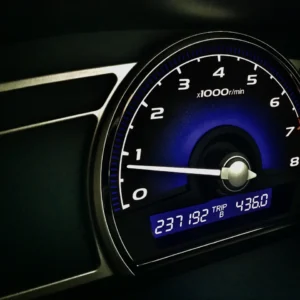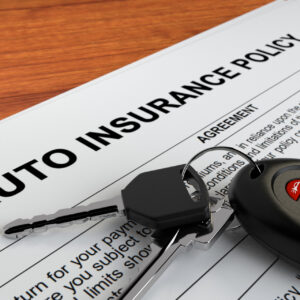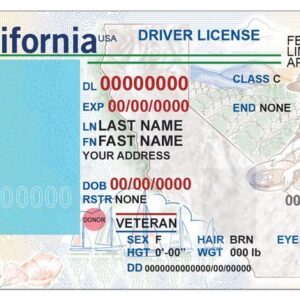Introduction
If you’ve ever found yourself searching for “cheap car insurance after a DUI,” “affordable coverage with tickets,” or “low-cost policies following an accident” in California, you’re not alone. High-risk drivers—those with DUIs, multiple traffic citations, or at-fault crashes on their record—often face premium hikes of 50% to 200% compared to drivers with clean records. Not only can this dent your wallet, but it can also feel like you’re being punished twice: once by the courts and again by your insurer. The good news? With a little know-how, strategic shopping, and understanding of the market, you can find surprisingly affordable options tailored to your unique situation.
In this comprehensive 2025 guide, we’ll walk you through:
- Why high-risk drivers pay more—and how much more
- Key factors insurers consider when setting rates in California
- Top carriers offering the cheapest car insurance for high-risk drivers in California
- Specialized policies for drivers with DUIs, tickets, or accidents
- Practical tips to lower your premiums
- How to compare quotes effectively
Whether you’re recovering from a DUI conviction, carrying a few too many speeding tickets, or simply want to be prepared for the future, this post will empower you to make an informed choice—and save money in the process.
Why High-Risk Drivers Face Skyrocketing Insurance Rates
Insurance is all about risk assessment. When you have a history of violations or accidents, insurers see you as more likely to file a claim. As a result, they adjust your premiums upward to offset the increased probability of payouts. In California, data shows:
- High-risk drivers pay an average of $204 per month, compared to $165 for drivers with clean records—an increase of about 24% on average.
- DUI convictions can skyrocket rates by up to 80%, sometimes even doubling your premium for the next three to five years.
- Multiple tickets or at-fault accidents can add hundreds—even thousands—of dollars annually, depending on severity and insurer policies (insurance.com).
Understanding these factors is the first step to negotiating better rates. Rather than resigning yourself to sticker shock, you can take proactive measures—such as shopping non-standard carriers, bundling policies, or enrolling in defensive driving courses—to mitigate these increases.
Who Qualifies as a High-Risk Driver in California?
Before diving into specific insurers, let’s clarify what makes you “high-risk” in the eyes of California insurance companies:
- DUI/DWI Convictions
- Even one DUI on your record typically stays for 10 years and can boost premiums by up to 80% .
- Multiple Traffic Tickets
- Frequent speeding tickets, red-light violations, or other moving infractions signal “risky behavior” and lead to surcharges.
- At-Fault Accidents
- Insurance companies factor in your accident history; one at-fault collision can jump your rate by 30–50%, while multiple accidents drive it even higher.
- Coverage Lapses
- A gap in your auto insurance signals instability and common higher-risk.
- Young or Inexperienced Drivers
- Teenagers and drivers under 25 statistically file more claims, placing them in higher-risk brackets.
- Poor Credit History (in most states, including California)
- Insurers often use credit-based insurance scores to predict claim likelihood.
Knowing where you stand helps you target insurers most willing to work with your specific risk factors.
Best Cheap Car Insurance for High-Risk Drivers in California
When it comes to finding budget-friendly policies for high-risk drivers, you have two main routes:
- Standard Carriers with High-Risk Programs
- Major names like Mercury Insurance and GEICO often offer high-risk driver discounts or special sub-programs.
- Non-Standard (Assigned Risk) Market
- Carriers such as The General or Dairyland specialize exclusively in high-risk coverage, sometimes at the cost of customer service or fewer policy options.
Below is a comparison of the average annual premiums for drivers with a DUI, multiple tickets, and an at-fault accident across leading insurers in California. This table is adapted from Insurance.com’s 2025 California guide (insurance.com).
| Insurance Company | Clean Record | With a DUI | Multiple Tickets | One At-Fault Accident |
|---|---|---|---|---|
| Mercury Insurance | $2,031 | $3,616 | $2,893 | $3,563 |
| GEICO | $1,919 | $4,825 | $2,994 | $3,876 |
| Progressive | $2,179 | $5,283 | $3,368 | $3,600 |
| Auto Club Enterprises (AAA) | $2,466 | $7,730 | $3,553 | $4,006 |
| State Farm | $2,701 | $9,499 | $4,071 | $4,543 |
Key Takeaway:
- Mercury Insurance consistently offers the lowest rates for all three high-risk categories.
- GEICO has the cheapest clean-record premiums but sees a steeper increase after a DUI.
- Progressive strikes a middle ground, especially if you bundle multiple policies.
Cheap Car Insurance for Drivers with DUIs in California
A DUI conviction is often the most expensive ticket you can receive. Not only does it carry heavy legal penalties, but insurance surcharges can linger for years. Here’s how the market shapes up in 2025:
- Mercury Insurance: $3,616/year average post-DUI premium
- GEICO: $4,825/year
- Progressive: $5,283/year
- State Farm: $9,499/year
Tips for lowering DUI-related premiums:
- SR-22 Filing: Required in California after a DUI, SR-22 “proof of financial responsibility” can be obtained through your insurer; some companies charge extra for filing the form.
- Defensive Driving Course: Completing a state-approved course can show insurers you’re serious about safer habits—and some carriers will reward you with a modest discount.
- Policy Bundling: Combining auto with home or renters insurance may earn a multi-policy discount that offsets your DUI surcharge.
By focusing your quote requests on carriers known for competitive post-DUI rates—particularly Mercury and GEICO—you can minimize the financial impact of your conviction.
Cheap Car Insurance for Drivers with Tickets in California
Speeding tickets, running red lights, or other moving violations signal risk—and many drivers underestimate just how much one ticket can hike their premium. Consider this:
- Mercury Insurance: $2,893/year with multiple tickets (vs $2,031 clean) (insurance.com)
- GEICO: $2,994/year
- Progressive: $3,368/year
Strategies to counter ticket surcharges:
- Traffic School
- In California, attending a defensive driving course can mask a single speeding ticket, keeping your record “clean” in the eyes of insurers (and preventing point accumulation).
- Good Student Discounts
- If you’re under 25 and a full-time student with a GPA of 3.0 or higher, many insurers offer a “good student” discount.
- Low-Mileage Discounts
- Insurers like Progressive and GEICO reward drivers who log under 7,500 miles/year with lower rates, which can offset minor-ticket increases.
Cheap Car Insurance for Drivers with Accidents in California
At-fault accidents are another major rate driver. One preventable crash can push premiums up by 30–50%. Here’s the current landscape:
- Mercury Insurance: $3,563/year after one at-fault accident (insurance.com)
- Progressive: $3,600/year
- GEICO: $3,876/year
Ways to mitigate accident-related surcharges:
- Accident Forgiveness: Offered by carriers like Progressive and Allstate, this option prevents your first at-fault accident from raising rates—often available as a paid add-on or earned after several claim-free years.
- Pay-Per-Mile Insurance: Providers like Metromile (available in select ZIP codes) charge you only for miles driven, reducing the impact of occasional stops at the grocery store (investopedia.com).
- Claims-Free Discounts: Maintain a clean claims history for 3–5 years to earn tiered discounts from many insurers.
Tips to Lower Your Premiums as a High-Risk Driver
Even if you’re in the high-risk bracket, you can still take steps to lower your premiums:
- Shop Annually: Rates change often, and carriers compete on price.
- Increase Your Deductible: Raising your collision and comprehensive deductibles from $500 to $1,000 can trim premiums by up to 20%.
- Maintain a Stable Address: Moving from an urban, high-theft ZIP code to a quieter neighborhood can reduce risk scores.
- Bundle Policies: Combine auto, home, and umbrella liability for multi-policy savings.
- Improve Your Credit: California insurers may consider credit-based insurance scores—so managing debts and errors on your report can pay dividends.
- Enroll in Usage-Based Programs: Programs like GEICO’s DriveEasy or Progressive’s Snapshot reward safe driving with discounts.
How to Compare High-Risk Auto Insurance Providers in CA
Comparison shopping is key. Here’s how to make it painless and effective:
- Gather Your Records
- Have your driver’s license, registration, VIN, and any prior insurance declarations ready.
- Use Aggregator Tools
- Websites like Insurify and The Zebra let you compare multiple carriers at once (insurify.com, thezebra.com).
- Request SR-22 Quotes
- Not all insurers file SR-22; make sure you specify you need SR-22 coverage when comparing.
- Check for Discounts
- Ask about multi-policy, good student, defensive driving, and usage-based discounts.
- Review Policy Details
- Look beyond the price: examine liability limits, uninsured motorist coverage, rental car reimbursement, and roadside assistance.
Conclusion
Being labeled a high-risk driver in California doesn’t mean you’re doomed to exorbitant premiums forever. By understanding how insurers calculate risk, focusing on carriers that specialize in or accommodate high-risk drivers, and leveraging discounts and defensive driving strategies, you can find surprisingly affordable coverage—even after a DUI, multiple tickets, or an at-fault accident.
Remember to shop around at least once a year, re-evaluate your coverage needs, and use online comparison tools to your advantage. With diligence and the insights in this 2025 guide, you can navigate the high-risk insurance market with confidence—and keep more money in your pocket.
Good luck, drive safe, and here’s to finding the best cheap car insurance for your unique journey on California roads!






